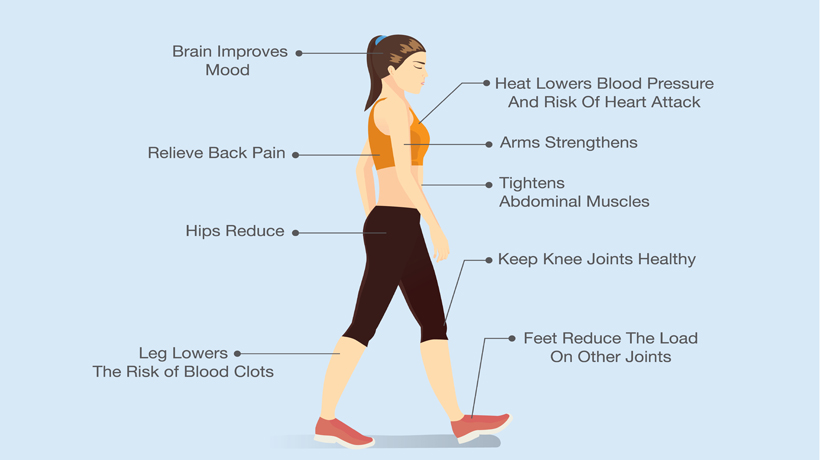Do you know that walking is considered a form of exercise? According to the website Better Health Channel, walking is a form of increased cardiovascular and pulmonary fitness. It reduces the risk of heart disease and stroke. Your bones become stronger and you improve your balance. Body fat is also reduced. There is an improved management of conditions such as; hypertension, high cholesterol, joint and muscle pain/stiffness, and diabetes.
The best technique
It is important to emphasize proper technique when walking, according to Mayo Clinic. Walking daily requires your head up, looking forward and not at the ground. Your shoulders, neck, and back should be relaxed. You are swinging your arms freely, with a slight bend at the elbow. Pumping your arms a bit is acceptable. Your stomach muscles should be slightly tightened, and your back should be straight, no arching forward or backward. Most importantly, be conscious of walking heel to toe.
Vary your incline
Aiming for different terrain can also benefit your health when walking. Try to find a park with uphill trails, or even go for a hike if you’re healthy enough to do so. A review in 2005 published by the journal Sports Medicine states that hill walking increases fat metabolism to maintain blood glucose levels. It also increases your metabolism when walking a low-to-moderate pace for a period of time. Walking on a treadmill has its benefits if you live in a region where the weather isn’t always ideal.
Walking for weight loss
At a brisk walking pace, you would burn 100 to 300 calories in 30 minutes, depending on your weight, or 200 to 600 calories in an hour. By walking for 30 minutes or more at a time, some of those calories will be from stored fat. During the first 30 minutes, your body is burning sugars that are stored as fuel. Clearly, walking is a step towards a healthier lifestyle.
Walking is low impact, requiring no equipment and can easily be achieved at any point throughout your day. Regardless of the pace in which you walk, the health benefit you achieve is greater than no physical activity. Investing in a watch that tracks the number of steps you take can be an addition to your new routine. There is no membership fee to partake in this form of exercise, so why not take advantage?
Sources:
https://www.betterhealth.vic.gov.au/health/healthyliving/walking-for-good-health
https://www.mayoclinic.org/healthy-lifestyle/fitness/in-depth/walking/art-20046261
https://www.livestrong.com/article/160132-how-does-walking-increase-metabolism/
https://www.verywellfit.com/how-long-should-you-walk-to-lose-weight-3432706



